 There’s been quite a bit of turmoil around how IOS developers can sell products and subscriptions within their IOS application. Apple says, essentially, if you sell stuff within your app you have to give Apple a 30% cut
There’s been quite a bit of turmoil around how IOS developers can sell products and subscriptions within their IOS application. Apple says, essentially, if you sell stuff within your app you have to give Apple a 30% cut and you can’t try to pass costs onto the customer by charging more for items purchased within an App. The cost for an item must be the same whether it was purchased through the app or through some other means. Update: In June, MacRumors reported that Apple updated its TOS so that content providers are now also free to charge whatever price they wish for content purchased outside of an App. Apple also says that you can no longer have a button or a link in your app to a website where a user can purchase content without giving Apple their 30% cut.
For most media industries,there is not enough left of the profit pie to allow Apple to take 30% of it. This has left most media companies in a quandary of how to continue to give their users a good experience, without bankrupting their company. Many folks looked toward Amazon to see how they would react. Amazon’s Kindle reader is used by millions of iPad and iPhone readers to purchase and read digital books. Amazon’s solution was simple. Last week they issued an update to their Kindle Reader IOS app that removed the Kindle Store button. After the update, The [Kindle Store] button is no longer present in the app. This means that users of the Kindle IOS app can no longer launch a book shopping session from within the Kindle app. Here’s the update:
Before the update, the Kindle app looks like this, with a very visible Kindle Store button that will take you to the Kindle web store, where you can buy Kindle books:
After the update, the Kindle App looks like this. The Kindle Store button is gone.
What are music services doing?
I was curious to see how various music subscription services were dealing with the same issue. I fired up the apps, checked for updates and this is what I found.
Spotify
Spotify updated their app to get rid of any in-app purchases or subscription links just like the Kindle. You can only listen to Spotify mobile if you already have a Spotify mobile account.
When you login to Spotify there is no option to register an account. Spotify just assumes that you have already registered and are ready to login in and start using the app:
Curiously, there is a ‘Get help at Spotify.com’ button on the More page of the app. This will open a web browser and bring you to the Spotify Help page, which puts you two clicks away from a ‘subscribe’ button. This must cut pretty close to Apple’s rules about links to web sites.
SiriusXM
As with Spotify, SiriusXM, removed any links back to their site. Only people that already have a SiriusXM account can use the SiriusXM app.
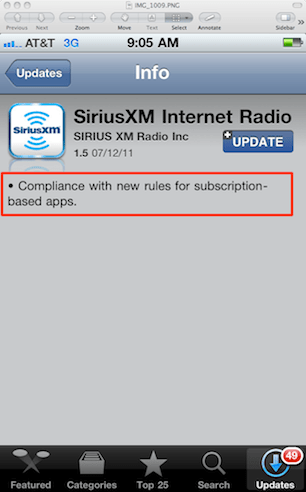
Rhapsody
Same story for Rhapsody, there’s no way to get a subscription for Rhapsody within the Rhapsody Application.
MOG
MOG issued in update in July that removed links to the MOG subscription portal.
Napster
Interestingly enough, the very latest version of Napster happily allows you to register for Napster through the application. On the Sign In page there is a prominent Register for Napster button.
Pressing the button brings you to a Registration page where you can sign up for a 7-day free trial
I wonder what happens if a 7-day free trial user converts to a paying subscriber. Does Apple get 30% or is Napster hoping that no one notices?
Update – A Napster update was released one day after this post was published that eliminates the direct signup link:
Slacker
Slacker’s $3.99 a month Radio Plus product is included as a prominent upgrade in the Slacker app. If you hit the upgrade button you will get a form to fill out with all of your credit card info so they can start charging you the 4 bucks. The question is whether or not Apple is getting $1.20 of that 4 bucks.
Pandora
With Pandora you can create a free account through the mobile app, but there is no mention of a premium account, nor are there any links to Pandora.com as far as I can tell.
Last.fm
Just like Pandora, the Last.fm app will let you sign up for a non-premium account via the app and makes no mention or attempt to upsell you to a paid account:
Rdio
Rdio takes a similar approach to Pandora and Last.fm. It allows users to sign up for a 7 day free trial account via the app. It makes no mention and has no links to a premium subscription page. It is not clear to me what happens at the end of the trial period, whether they will prompt you to visit Rdio, or if they just say “Your free trial is over, thanks for listening”.
Update – It is a moving target out there. Rdio issued an update yesterday that now allows you to purchase a monthly subscription in the app. With the new version you can now click on the ‘Subscribe to Rdio Unlimited’. When you do you receive this confirmation dialog:
This allows you to purchase the Rdio subscription for $14.99, which just happens to be 33% more than an Rdio Unlimited subscription would cost if purchased directly from the web. Rdio is taking advantage of Apple’s recent relaxation of the rules and seeing how effective in-app subscription purchases stack up against cheaper out-of-app purchases. There’s a good LA Times article Rdio attempts to survive Apple’s subscription tax that describes Rdio’s approach to dealing with this issue.
Playme
The latest version of Playme doesn’t have a button or link that brings you to the Playme subscription page. It does, however, display http://www.playme.com prominently on the sign in page so you can type the URL directly into your browser. I guess technically the words http://www.playme.com are not a link if you can’t click or tap it to go there.
Grooveshark
Grooveshark has never been timid of walking up to the line and stepping across it. The only way to get Grooveshark on an IOS device is to Jailbreak your device. With a Jailbroken version, Grooveshark doesn’t need to pay anyone for anything.
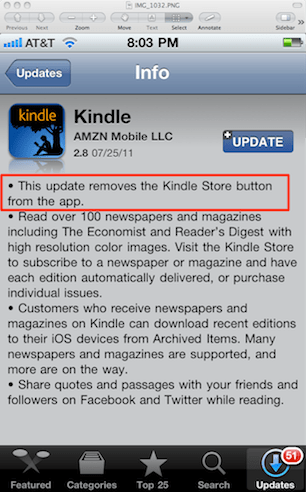
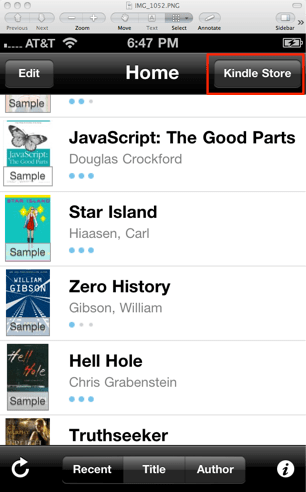
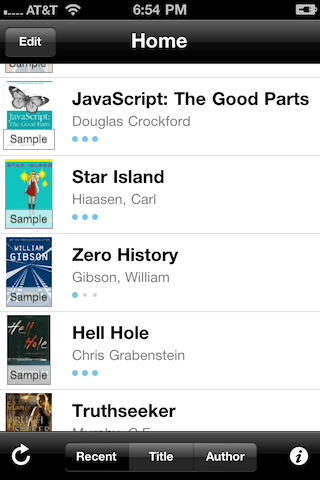

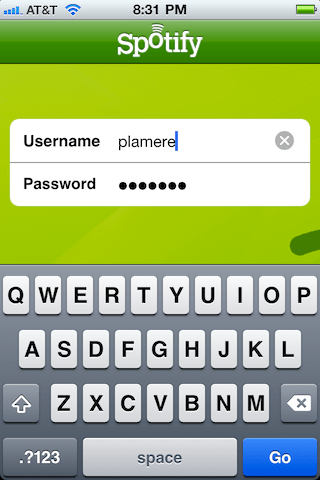
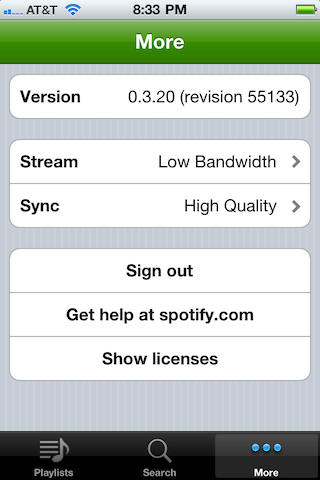
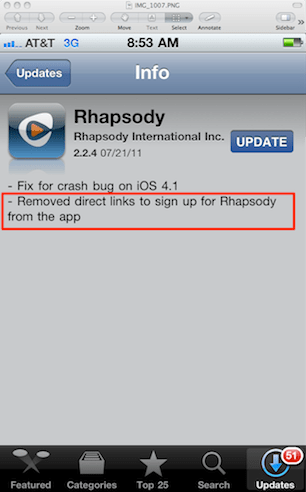
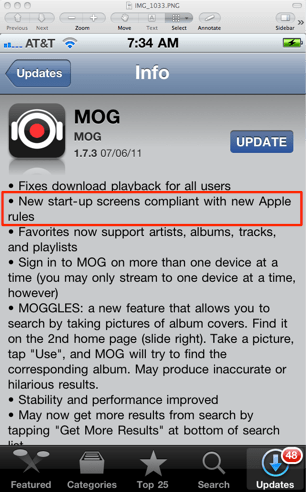
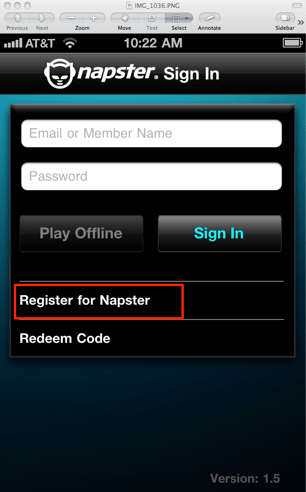
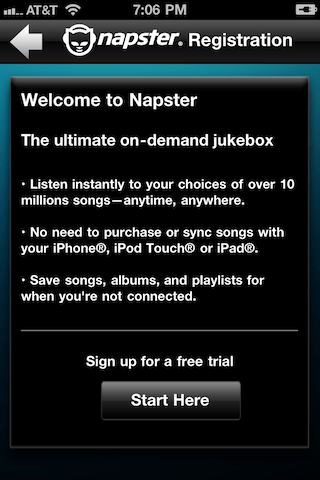
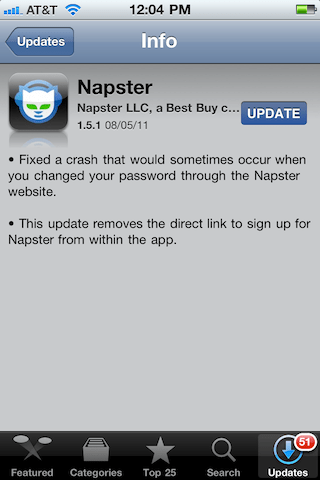
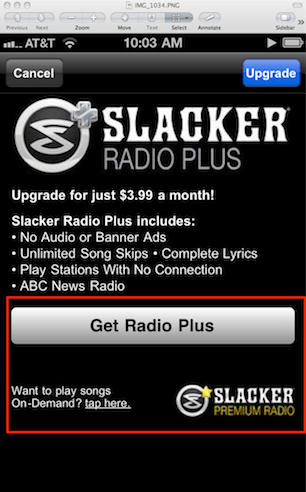
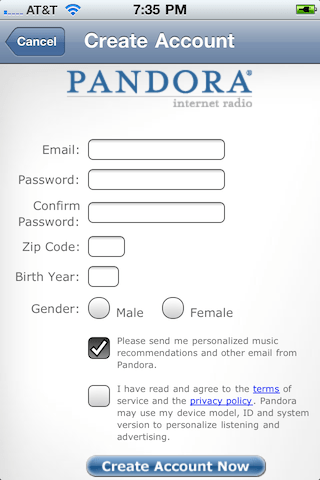
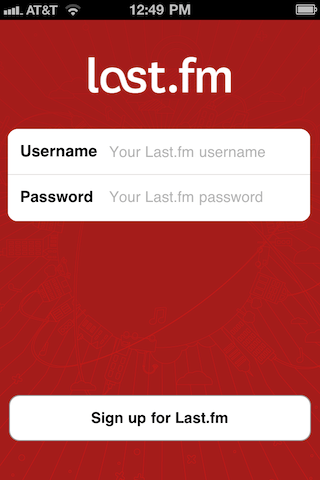

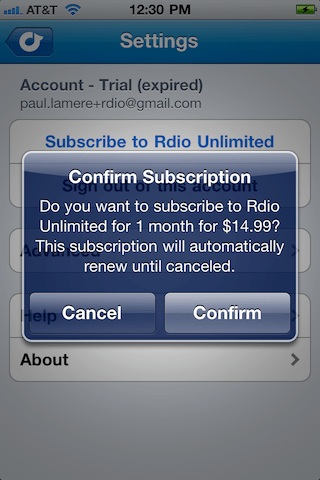

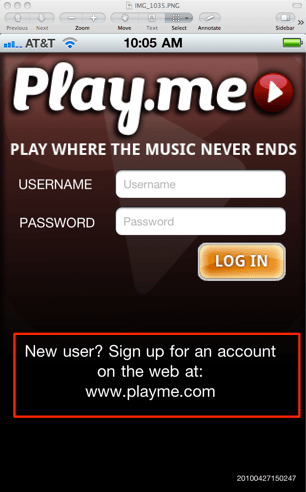
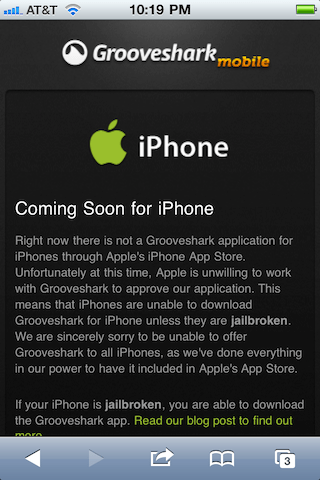
#1 by lucasgonze on August 4, 2011 - 9:28 pm
Special prizes to Napster for being so slow on the uptake and Rdio for finessing the legalese.
#2 by Ann Marie Landry on August 5, 2011 - 9:44 am
Really fantastic post! While the app selection on Android is getting better, it is still frustrating when there are iOS apps and not something for Android. This makes me a little happier that I don’t have to deal with Apple and its abuse of power.
#3 by Marc on August 7, 2011 - 4:54 am
Great, very uefull.
Cheers